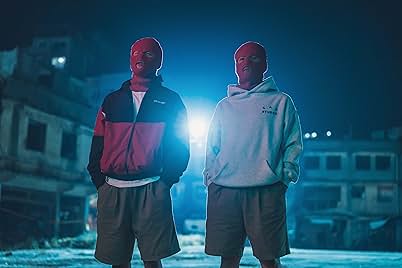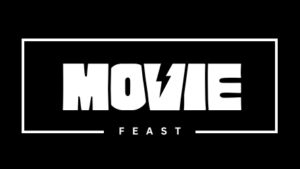The ONE: High School Heroes review reveals why this 2025 Korean drama delivers genuine intensity and emotional depth. The focused direction transforms familiar school violence territory into something genuinely gripping and emotionally resonant.
What happens when you combine the vulnerability of academic pressure with the most dangerous aspects of school hierarchy? You get vigilante drama perfection. ONE: High School Heroes (2025), based on the popular webtoon, stands as one of the most compelling school action dramas in recent Korean television history. This intense series follows Kim Ui-Gyeom, a top student who transforms from passive victim to masked vigilante fighting against school bullying. While the drama operates on familiar anti-bullying territory, it succeeds because it never exploits its premise—every moment of violence and character development is handled with complete emotional authenticity.

Synopsis
Kim Ui-Gyeom is the exemplary student at his high school, maintaining perfect grades while staying far from any conflict or violence. However, beneath his academic success lies a dark reality of domestic abuse from his oppressive father, Kim Seok-Tae, and growing awareness of the brutal bullying culture that plagues his school. When Ui-Gyeom witnesses the systematic torment of his classmates and realizes the school administration’s complete failure to protect victims, something fundamental shifts within him.
Joining forces with skilled fighter classmates, Ui-Gyeom forms the High School Heroes, a masked vigilante group dedicated to fighting back against bullies and protecting the vulnerable students that the system has failed. The series follows their transformation from ordinary students into a coordinated force for justice, as they navigate the dangerous line between heroism and vigilantism while confronting their own trauma and the corrupt systems that enabled their suffering.

Plot & Themes
ONE: High School Heroes operates on a powerfully complex premise: sometimes the most profound justice comes from those who refuse to accept systemic failure as inevitable. The high school setting serves as both battlefield and metaphor for exploring deeper questions about courage, solidarity, and the responsibility to protect others when institutions fail.
The series’ genius lies in its careful balance between action elements and character development. When Ui-Gyeom and his allies face moral dilemmas about violence and justice, the show never treats their internal struggles as secondary to the fight sequences. These moments work because the creators understand that true tension comes from emotional investment in the characters’ moral journey.
Thematically, the drama explores how trauma can either break individuals or forge them into protectors of others. Ui-Gyeom’s journey isn’t just about stopping bullies—it’s about discovering that shared pain can create unbreakable bonds and that ordinary people can become extraordinary when they choose to stand up for what’s right.

Cinematography & Visuals
The cinematography captures the claustrophobic intensity of school violence with visual techniques that serve both the action and emotional elements perfectly. The visual style emphasizes the contrast between the sterile academic environment and the brutal reality of student suffering, using dynamic camera work and stark lighting to create mounting tension while highlighting the masked heroes’ dramatic presence.
The series excels in building suspense through environmental storytelling. The sequences showing the heroes’ coordinated attacks on bullying groups demonstrate excellent use of school locations transformed into battlegrounds. The camera work holds on meaningful moments of fear and determination just long enough to create genuine emotional investment in both victims and heroes.
Fight choreography details reward careful viewing. During action sequences, attentive viewers will notice how each hero’s fighting style reflects their personality and background, while the masked vigilante aesthetic creates both mystique and powerful visual symbolism.
Acting & Characters
Lee Jung-ha delivers a compelling performance as Kim Ui-Gyeom, anchoring the ensemble with his portrayal of a student finding courage he didn’t know he possessed. His character arc from submissive academic achiever to determined vigilante leader feels authentic and earned rather than forced. Jung-ha brings both intellectual intensity and physical conviction to the demanding dual role.
Kim Do-wan provides excellent support as a key member of the High School Heroes, bringing technical expertise and strategic thinking to the group dynamic. His chemistry with Jung-ha creates believable partnership between complementary skill sets under extreme circumstances.
Kim Sang-ho rounds out the core cast with a performance that balances adult authority with the complex moral landscape the students navigate. His scenes during the most intense confrontations demonstrate genuine concern while maintaining character consistency.
The supporting ensemble, including Kim Joo-ryoung and the extended cast, brings authenticity to both victim and antagonist roles without falling into stereotype, creating believable school dynamics that serve the story’s exploration of systemic problems.
Direction & Screenplay
The direction maintains perfect tension throughout the series’ runtime while developing complex character relationships. Coming from extensive experience with action drama, the creative team understood that vigilante stories require careful pacing that builds intensity without sacrificing character development. Every revelation and confrontation sequence is given space to resonate emotionally.
The screenplay layers conflict at multiple levels:
- Character development that explores trauma and empowerment authentically
- School violence elements that feel researched rather than sensationalized
- Action components that build naturally from the characters’ moral choices
- Emotional beats that never feel manipulative or oversimplified
The script’s structure follows vigilante conventions while subverting them through genuine character growth. This creates familiarity that makes the unexpected moments of heroism and moral complexity land with greater impact.
Sound & Music
The series’ score perfectly balances youthful energy with underlying menace to create an audio landscape that mirrors the students’ psychological transformation. The music enhances rather than overwhelms the natural drama of both the school conflicts and the heroes’ moral journey.
Sound design plays a crucial role in building tension. The way ordinary school sounds become threatening, and how the heroes’ coordinated movements create their own rhythm of justice, establishes an immersive experience that places viewers directly into their dangerous mission.
The use of silence deserves particular recognition. Key moments of moral decision and personal revelation are allowed to breathe without musical manipulation, trusting audiences to connect with the characters’ emotional reality through performance alone.
Conclusion & Verdict
ONE: High School Heroes succeeds because it treats its vigilante premise with moral intelligence and respect for both its young characters and the serious issues they face. Every element—from performance to cinematography to sound design—works in service of both action and character development without sacrificing either.
Strengths:
- Powerful lead performance that creates believable transformation from victim to hero
- Authentic school violence elements that feel researched and respectful to real experiences
- Excellent pacing that builds intensity while maintaining character focus
- Thoughtful exploration of justice and morality through action rather than exposition
Minor Weaknesses:
- Some vigilante elements feel slightly predictable for the genre
- Occasional pacing issues in exposition-heavy episodes slow momentum briefly
This series remains essential viewing for action drama fans and anyone who appreciates character-driven stories about standing up to injustice. ONE: High School Heroes works for audiences who enjoyed Weak Hero Class 1, School 2017, or The Glory.
Rating: 8.8/10
Director: TBA
TV Rating: TV-14 (for violence, intense thematic material, and language)
Starring: Lee Jung-ha, Kim Do-wan, Kim Sang-ho, Kim Joo-ryoung
For more Korean drama reviews, check out our analysis of other webtoon adaptations. You can also explore the series’ production details at the Internet Movie Database.


